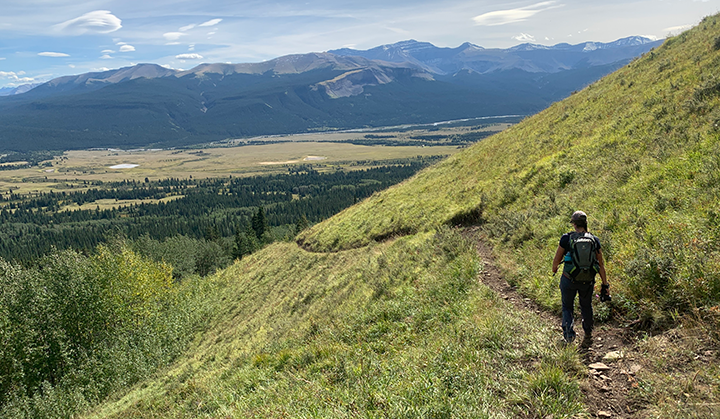Today’s announcement from the Alberta government regarding a new Trails Act does not clearly address the long-term protection of sensitive lands, waters, and wildlife in the province, say staff at Yellowstone to Yukon Conservation Initiative (Y2Y).
“Our public lands provide rich habitat for wildlife, some of the world’s most intact mountain habitats and opportunities for outdoor recreation,” says Hilary Young, Y2Y’s senior Alberta program manager.
“But this Act seems to speak for the few, not the majority of users. This is another example where the province has not engaged in fulsome consultation with Albertans about a decision that has a significant impact on Crown lands in our mountains and foothills.”
According to Y2Y, the impacts of the Trails Act on wildlife are uncertain given that the regulations are still outstanding. Large tracts of the Eastern Slopes’ public lands are key habitat for grizzly bears, wolverines and at-risk native trout. Trails and trail systems need to meet ecological thresholds for these key species. Well-managed trails and bridges can reduce the impact of motorized vehicles on waterways and sensitive species, but the location, intensity of use, and number of trails are equally important factors.
Bill 79, or the new Trails Act, which has the potential to legalize new trails in the province if passed, “jumps the queue” says Young — by focusing on the protection of trails without first establishing how they align with the sensitivity of the local environment and larger landscape. Y2Y also questions how these trails fit in with cumulative impacts from non-recreational uses, including industrial and commercial operations.
“Before deciding where new trails will be, who can use them, and how they will be maintained, the provincial government needs to commit to a science-based plan for how to manage public lands,” adds Young. “Alberta’s Land Use Framework lays out regional and sub-regional planning processes, but these plans are now years overdue.”
The public input for this Act, which impacts all recreational users of public lands in Alberta, was limited to an online survey from November 2020 to January 2021 mainly focused on park fees — the same survey that led to the Kananaskis Conservation Pass. Such an avenue for public input is inadequate and misleading.
In addition, Y2Y notes that although an annual fee for motorized users was part of the government’s conservation platform, no such fee was part of today’s announcement. Y2Y urges Alberta Environment and Parks to undertake a robust public consultation process that reflects Alberta’s diverse recreation crowd and also prioritizes Indigenous land-uses protected by Treaty and Constitutional Rights.


